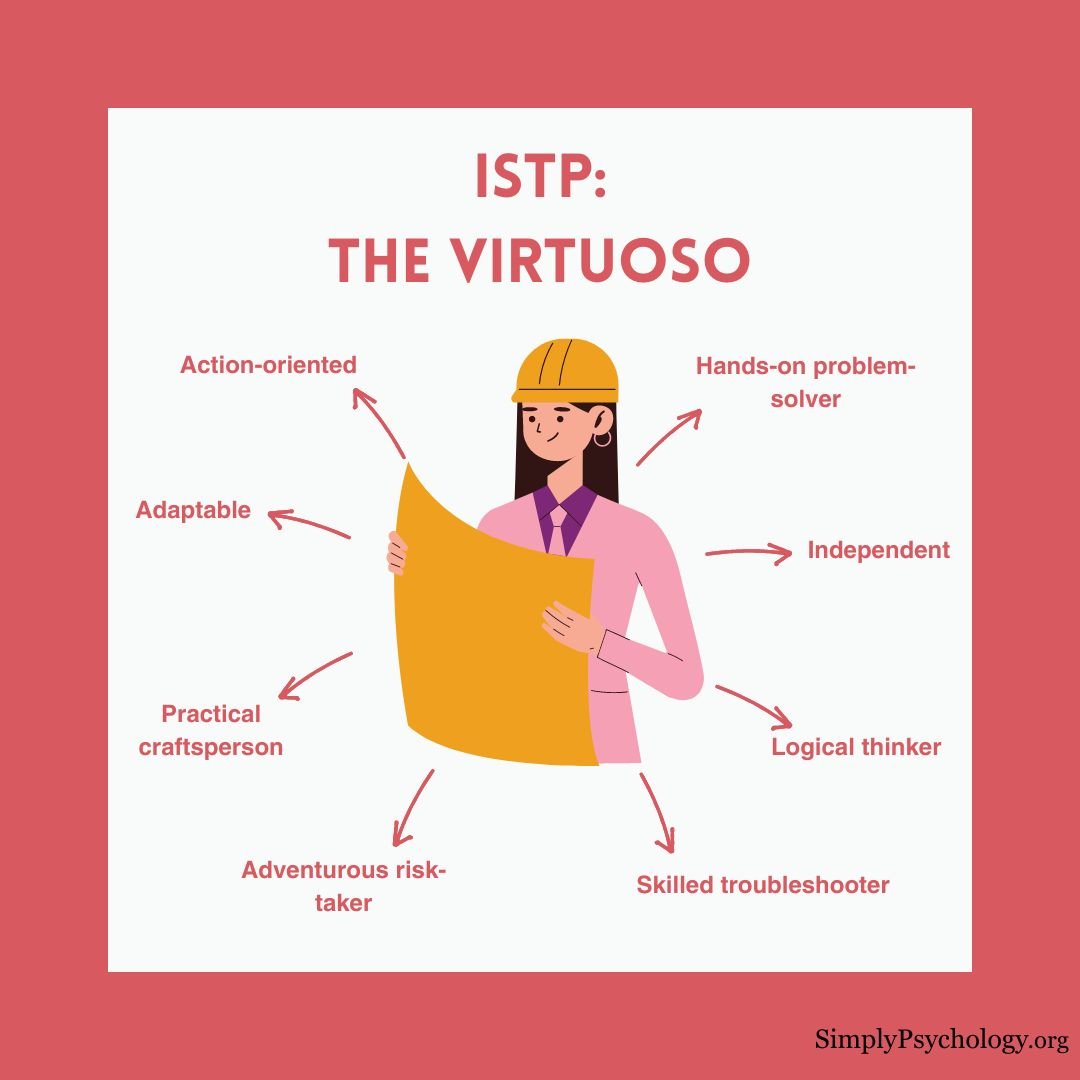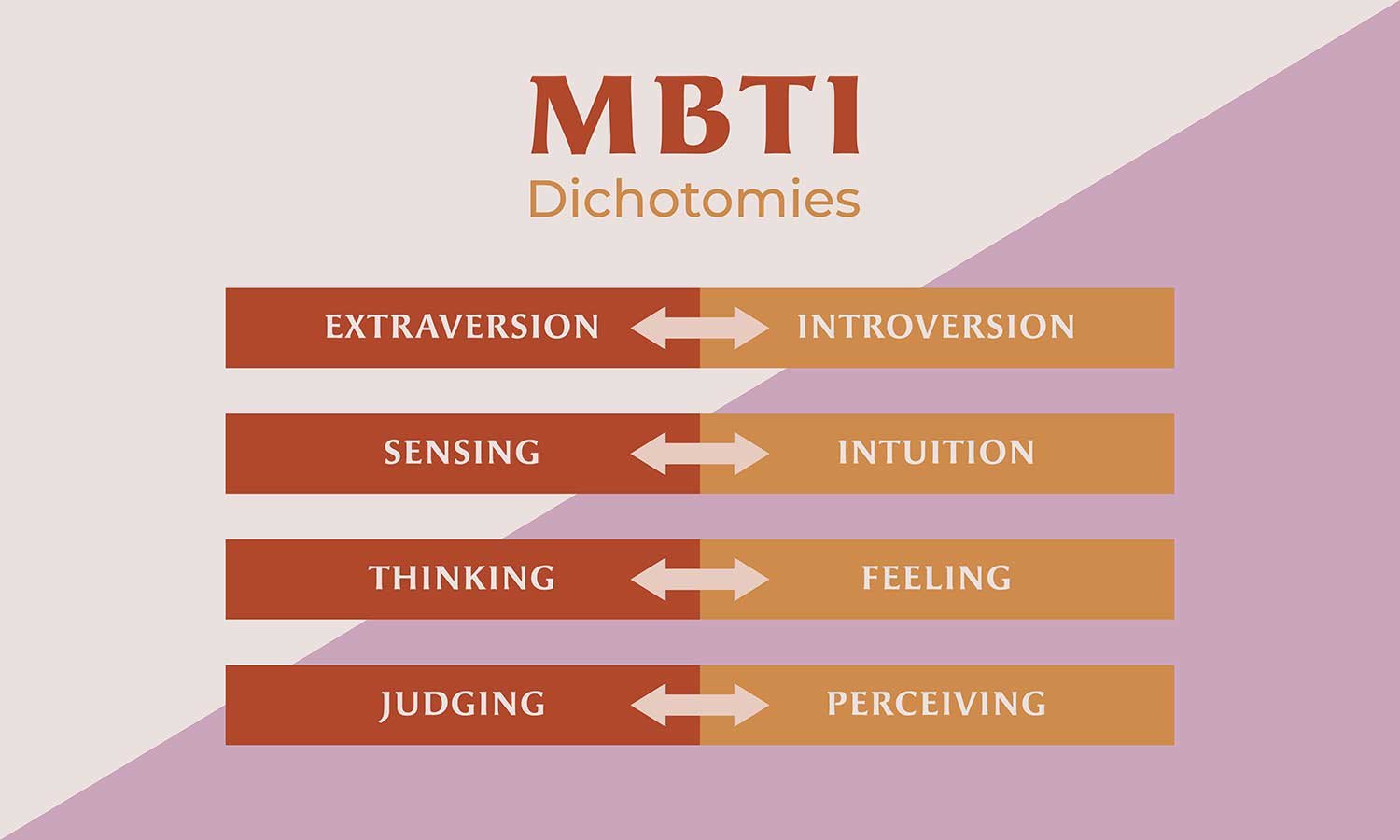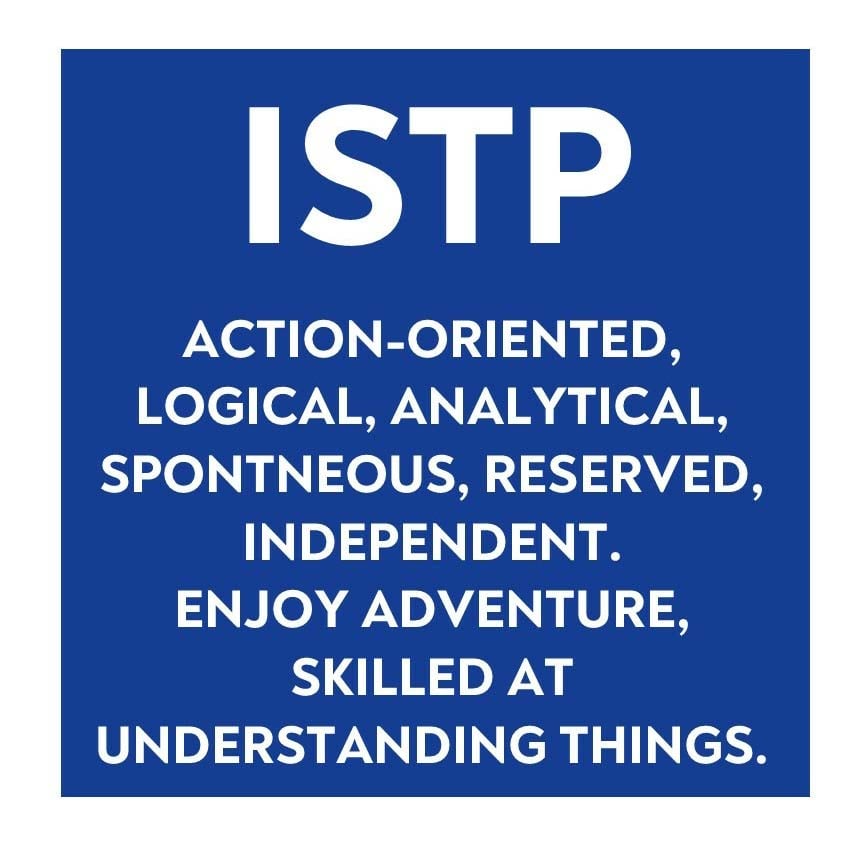ISTP, a term from the Myers-Briggs Type Indicator (MBTI), stands for Introversion, Sensing, Thinking, and Perceiving. ISTPs are practical, analytical, and flexible, often recognized for their mechanical skills, problem-solving abilities, adaptability, and preference for hands-on experience.
ISTP Meaning
ISTPs find energy in solitary activities (Introversion), favor practical details and present realities over abstract concepts (Sensing), base decisions on logical analysis rather than personal emotions (Thinking), and appreciate adaptability and a spontaneous approach to life (Perceiving).
People with this personality type are fearless and independent. They love adventure, new experiences, and risk-taking. They tend to be quiet observers and are not well attuned to the emotional states of others, sometimes coming across as insensitive or stoic.
They are results-oriented, acting quickly to find workable solutions and understand the underlying cause of practical problems. ISTPs are sometimes referred to as “the Craftsman,” “the Crafter,” or “the Virtuoso.” ENFJ is the opposite personality type of ISTP.

The ISTP personality type is much more common among men than women. Among men, it is the third most common type in the population. Among women, it is the fourth rarest.
- 5% of the general population
- 9% of men
- 2% of women
Famous ISTPs include Lance Armstrong, Tiger Woods, Clint Eastwood, Amelia Earhart, Bruce Lee, and Katherine Hepburn.
| Strengths | Weaknesses |
|---|---|
| Practical | Insensitive |
| Spontaneous | Reserved |
| Action-oriented | Easily bored |
| Easygoing | Risk takers |
Key ISTP Characteristics
ISTPs are fiercely independent
- They typically live their lives in a self-directed manner, sticking to their own habits, ideas, and lifestyle choices.
- They tend to struggle with boundaries and guidelines as they prefer to have the freedom to work at their own pace and explore life as they desire.
- They are true introverts who are private about their personal lives and prefer to spend time alone.
- They dislike small talk and tend to connect with others by sharing activities and working together on a project.
ISTPs are adventurous and ambitious
- They enjoy thrill-seeking activities and fast-paced hobbies such as motorcycling, bungee jumping, or surfing.
- They love to get their hands dirty and use their senses to engage with the world around them.
- They regularly will venture out of their comfort zone, exploring novel ideas through first-hand experiences and learning new skills through trial and error.
- ISTPs are very imaginative when it comes to mechanics and crafts, and they are typically attracted to hands-on hobbies.
- They approach each new project with an interest in troubleshooting, and they often have an intuitive ability to fix things.
ISTPs are practical, creative, and result-oriented
- They are more interested in finding rational solutions to problems than mulling over abstract ideas or concepts.
- They tend to have exceptional technical and mechanical skills and a unique ability to fix, repair, and tinker with tools, machines, and appliances.
- They want to understand the causes behind any obstacles they face so they can quickly work to improve them. They excel in problem-solving and are natural in crisis situations.
ISTP individuals are actually quite enigmatic
- They are friendly and enjoy the presence of others, but are also very private. They are reserved, but not withdrawn.
- They are calm and often described as quiet, but they are also spontaneous adventure-seekers.
- They combine impulsivity with logic, easily switching mindsets to adjust to new situations and environments.
- They are versatile individuals who go with the flow and live in the present moment.
Cognitive Functions
The MBTI suggests that the four different cognitive functions (thinking, feeling, intuition, and sensing) form a hierarchy where each function is either directed outwardly (extroverted) or inwardly (introverted). The order of these functions determines one’s personality.

The dominant function is the primary aspect of personality, while the auxiliary and tertiary functions play supportive roles.
Dominant: Introverted Thinking
- ISTPs process most of their emotions and thoughts internally as opposed to expressing themselves verbally.
- ISTPs approach the world rationally and logically, making decisions based on practical and objective information rather than personal opinions or emotional factors.
- Their actions and choices are dependent on careful observation and thought.
Auxiliary: Extraverted Sensing
- ISTPs are highly attuned to their surroundings and have a strong sense of their immediate environment.
- They prefer to focus on the present moment rather than think about future possibilities or make long-term commitments.
- They enjoy learning about how things work and operate and are interested in things that have practical applications.
Tertiary: Introverted Sensing
- This function of the ISTP personality is largely unconscious. It tends to operate behind the “gut feelings” that ISTPs occasionally experience when making a decision.
- As ISTPs take in information from their dominant and auxiliary functions, they occasionally experience sudden epiphanies or revelations.
Inferior: Extraverted Feeling
- This is the least developed element of the ISTP personality, surfacing in times of stress.
- When faced with pressure, ISTPs can erupt with emotion, displaying their feelings and concerns in inappropriate or unexpected ways.
ISTP Hobbies, Interests, and Careers
ISTPs enjoy hobbies and careers that require hands-on work and technical expertise. They prefer tasks that have practical, real-world applications where they can solve problems and find logical solutions.
They feel the most satisfaction from building something concrete where they can see tangible results. Because of their adventurous nature, ISTPs enjoy careers that involve physical activity, even with a bit of thrill or risk.
ISTPs have a particular fascination with how things work and how tools can be used. They enjoy a job that is action-oriented and does not involve much planning, theorizing, or rule-following. Popular ISTP careers include engineers, mechanics, carpenters, forensic scientists, firefighters, pilots, or detectives.
In their free time, ISTPs are drawn to thrilling activities and those that allow them to work with machinery or tools. They enjoy archery, weaponry, hunting, scuba diving, rappelling, aviation, skydiving, motorcycling, and other extreme sports.
ISTP Work Environments
ISTPs thrive in work environments that are unpredictable, fast-paced, and rewarding. They enjoy working alone, and engaging in a variety of tasks with minimal supervision.
They are problem solvers who want to have the space and freedom to utilize their skills and solve complex problems. They need room for risk-taking and the freedom to jump in and out of activities. They also appreciate challenges, and they thrive in difficult, pressured situations.
ISTPs appreciate the independence to create their own schedules, responsibilities, and solutions. They struggle in highly structured and regimented environments where they are required to adhere to strict rules and regulations.
ISTPs flourish in careers that will offer challenge, variety, flexibility, stimulation, and unpredictability.
ISTP Personal Relationships
Because ISTPs are introverts, they tend to be quiet and reserved and struggle to share their emotions with others. They are extremely private individuals, and for this reason, they tend to be difficult to get to know and understand.
ISTPs are highly independent individuals and they value their own personal space which can make others feel shut out at times.
They are not highly adept at dealing with other people’s emotions and personal issues as they find the temporary nature of emotion difficult to understand.
Commitment is also challenging for an ISTP as they are not forward-thinking individuals and do not want to be bound to any particular person or activity.
However, they will put a lot of effort into the relationships that matter to them. They tend to form their closest relationships with those who enjoy similar hobbies.
They enjoy spending time with their friends pursuing these similar interests and activities.
Since they struggle with expressing emotion verbally, ISTPs tend to show their affection and love for friends, family, and partners by being of practical service, responding to their needs, and engaging in shared interests.
Tips for Interacting With ISTPs
Friendships
ISTPs form the most stable and rich friendships with those who give them the freedom to be themselves. They want friends who are willing to pursue new activities and go on thrilling adventures with them.
As a friend of an ISTP, you must respect their need for space and allow them the independence to do their own thing.
Relationships
As the partner of an ISTP, I find it important to take things day by day, as jumping into commitment is challenging for them.
They want a partner who will appreciate their skills and hard work, while allowing them plenty of freedom to be themselves, both physically and mentally.
They are able to enjoy the comforts of a steady partner as long as you can respect their need for independence and do not make them feel constrained to any obligations or expectations.
Parenting
As a parent, ISTPs show their love for their children through action-oriented tasks such as crafting or building something for them rather than being verbally affectionate.
ISTP parents struggle with emotional bonding, but they are best able to connect with their children by teaching them new skills and enjoying physical activities together.
They give their children a lot of freedom to explore and venture on their own and tend not to impart their own principles or interests to them.
Test
Answer these questions to find out if ISTP might be your personality type:
- Do you prefer hands-on experiences and practical problem-solving over abstract theories?
- Are you drawn to activities that involve physical skills or mechanical understanding?
- Do you tend to be reserved and enjoy spending time alone or in small groups?
- When making decisions, do you rely more on logical analysis than on emotions?
- Are you adaptable and flexible, easily adjusting to new situations?
- Do you enjoy taking risks and seeking out new, adventurous experiences?
- Are you more focused on the present moment than on long-term planning?
- Do you have a natural ability to understand how things work and fix mechanical issues?
- Are you sometimes described as independent or even rebellious by others?
- Do you prefer expressing affection through actions rather than words?
If you answer “yes” to most of these questions, you may have ISTP personality traits. However, remember that personality is complex, and a professional assessment would be needed for a definitive personality type determination.
Take the MBTI (Paper Version)
Sources
King, S. P., & Mason, B. A. (2020). Myers‐Briggs Type Indicator. The Wiley Encyclopedia of Personality and Individual Differences: Measurement and Assessment, 315-319.
Myers, I. B. (1962). The Myers-Briggs Type Indicator: Manual (1962).
Myers, K. D., & Kirby, L. D. (2015). Introduction to type: A guide to understanding your results on the MBTI assessment. Sunnyvale, CA: CPP.
Myers-Briggs Type Indicator. (2019, May 28). New World Encyclopedia, . Retrieved from https://www.newworldencyclopedia.org/p/index.php?title=Myers-Briggs_Type_Indicator&oldid=1020015.
Myers, Isabel B.; Myers, Peter B. (1995) [1980]. Gifts Differing: Understanding Personality Type. Mountain View, CA: Davies-Black Publishing. ISBN 978-0-89106-074-1.
Pittenger, D. J. (2005). Cautionary Comments Regarding the Myers-Briggs Type Indicator . Consulting Psychology Journal: Practice and Research, 57(3), 210-221.
The purpose of the Myers-Briggs Type Indicator®. The Myers & Briggs Foundation: MBTI Basics. (n.d.). Retrieved from https://www.myersbriggs.org/my-mbti-personality-type/mbti-basics/



